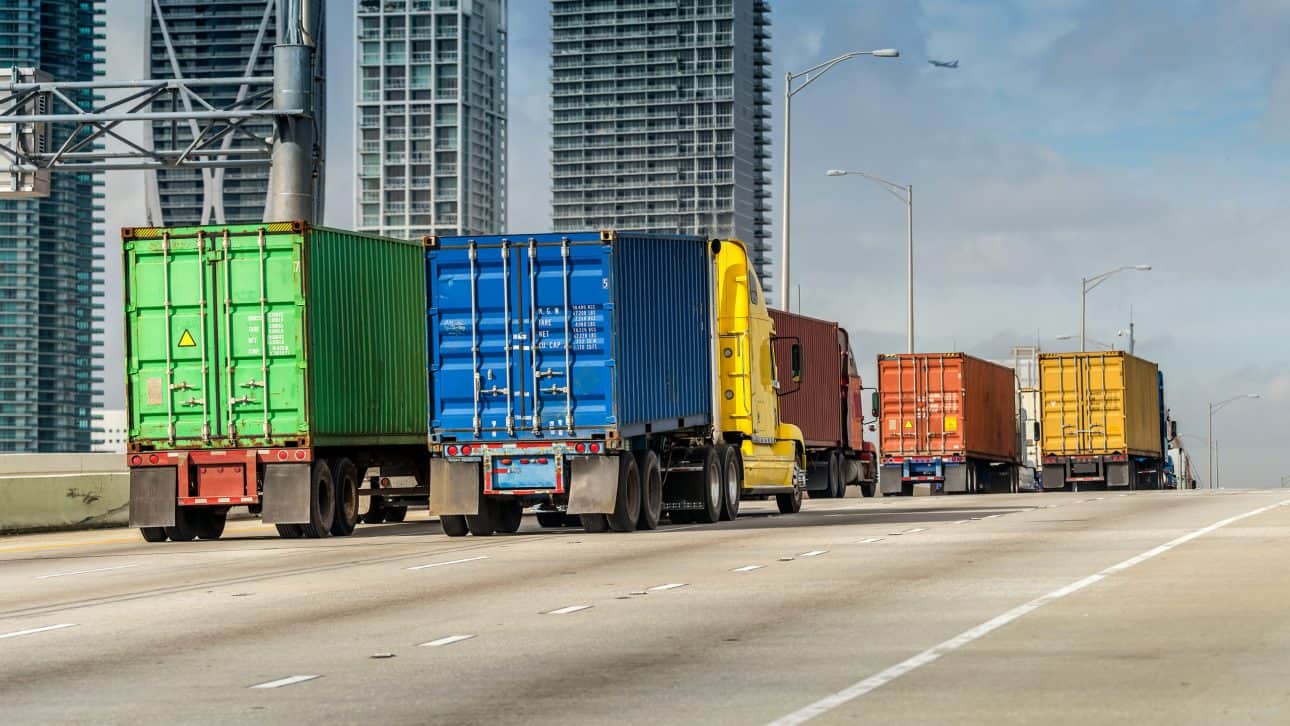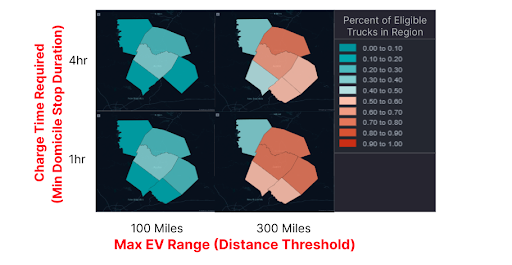Turning Data Into Decisions: Our 2025 Freight Impact and 2026 Vision
See how we helped planners improve safety, efficiency, and data-driven decision-making in 2025 — and where we’re heading in 2026.

At Geotab Connect 2024, we discussed “Driving Transportation Insights: Altitude Product Overview” and “How Research on the Horizon Turns into the Art of the Possible,” highlighting the unique ways that new resources can be used to shape infrastructure and policy decisions. To start things off, Mike Branch, Geotab’s VP of Data and Analytics, talked about our evolution since we launched in 2021. We’ve gone from data explorers, recognizing that important data existed to develop smarter cities and highways, to providers of deeper insights, knowing that sheer data access alone isn’t enough.
Shweta Shah, Geotab’s AVP, Altitude by Geotab Product and Engineering, also provided a high-level overview of the Altitude platform and Daniel J. Lewis, a distinguished Data Scientist at Geotab, offered a special glimpse of what might be possible in the future using the analytics that are fed from Geotab’s solutions ecosystem into the Altitude platform.
This blog post provides a recap of the presentations and sheds light on where Altitude by Geotab is headed in the future.
Altitude is a tool that provides contextualized, aggregate vehicle movement insights to help organizations support their transportation infrastructure and policy decisions with data. With over four million connected commercial vehicles driving over 170 million miles a day, Geotab processes 55 billion raw data records daily. In Altitude, we even take these insights a step further by helping to explain the “what” and “why” of vehicle movement, giving users the ability to categorize and understand vehicle journeys and stops in a number of detailed ways. These include, but are not limited to filtering the most popular routes driven, vehicle classes and vocations.
By giving transportation modelers and planners deeper indicators about the purposes of trips, our platform helps them better understand why vehicles travel in the ways they do. They can then leverage these insights to construct smarter infrastructure. Altitude’s key features are also designed to work in conjunction with one another to provide a truly holistic glimpse of all vehicle motion.
Origin & Destination: Gain holistic insight into where vehicles are traveling to and why. Easily evaluate demand on areas of interest such as ports or bridges or broaden the analysis to understand more general movement patterns.
Stop Analytics: See hotspots indicating where vehicles most commonly park and learn why these areas are being chosen. Use Altitude’s flexible geographic aggregation methods to understand last-mile curbside usage, adequately plan for HOS travel breaks and plan for electrification infrastructure.
Regional Travel Metrics: Identify and study commonly congested thoroughfares and acquire a comprehensive picture of how vehicles move within certain areas. Study common backups and the effects of traffic-tempering strategies to fine-tune regional mobility.
Geotab models our data against actual ground truths recorded by the Federal Highway Administration (FHWA), proving it to be representative of the general commercial vehicle population. Our models can be used to expand ITS observations, reflecting a full picture of vehicle movement.
During this session, a demonstration was given of how VMT data in the state of California could be used to understand general travel in an area of interest and identify what vehicle types are making up the bulk of the total area’s mileage. California’s highest traffic activity was shown to be concentrated in the southern region closest to ports. Our presenters also discussed how historical data can be used in tandem with machine learning to see which vocations are contributing the most mileage in a given area.
Using this valuable context as well as stop analytics, travel durations and other key insights to ascertain vehicle purposes, stronger policies can be planned to support better freight movement and transportation infrastructure. These policies can range from equity considerations for places where most VMT is occurring to funding the construction of additional lanes to streamline traffic flow.
![]()
An Altitude screenshot demonstrating stop count assessments near Los Angeles.
Our speakers also demonstrated how ITS data can be used in Texas to identify areas to implement EV-friendly infrastructure. Using regional domicile analytics (RDA) in our platform, state modelers and transportation planners can review trends in overall movement of vehicles and know which areas are best positioned for electrification. Electrification potential is gauged with RDA by setting eligibility requirements based on expected driving range and recharge time. By studying different scenarios and measuring the potential impact of these metrics, modelers can use RDA to forecast how many vehicles could go electric, predict when they would need to electrify and what charging infrastructure would be needed to support them.

An analysis of maximum ranges and charge times focused in the Austin area using Altitude.
This year’s product roadmap and R&D initiatives for Altitude were also highlighted. The product enhancements that are planned include:
The updates were prefaced by a demonstration of how the traffic Geotab analyzes has a proportional match to what’s witnessed on the ground. As a fraction of a particular road’s actual volume, we can calculate accurate ratios of real traffic by taking our observed metrics and modeling them against what’s being reported by stations at ground level. These analytics are called expansion factors.
Acquiring expansion factors helps organizations gain additional context for the data they’re studying. Lewis also highlighted how our team is planning to add cutting-edge capabilities to our expansion factors in the future by bringing in categories like population, economics and road types. Using these new factors in conjunction with concepts like speed limit indicators, neighborhood designations and stop clustering, users can analyze a trove of extensive vehicle data.
Our team is committed to extending the scope and potential of our Altitude platform for companies, institutions and government organizations alike so they’re able to gain the most value possible while planning the transportation grids of the future. Through each of these new research and enhancement initiatives, we’re expanding the limits of what’s possible using our platform’s capabilities.
Geotab’s opening Altitude by Geotab sessions at Connect 2024 provided a comprehensive demonstration of Altitude and also highlighted game-changing insights on the future of our product and its use cases. Our intelligent transportation data is being used to construct smarter cities, revolutionizing the safety and efficiency of traffic flow for every motorist.
Learn more about the Altitude Platform or schedule a personal demo of the platform with one of our solutions experts today.